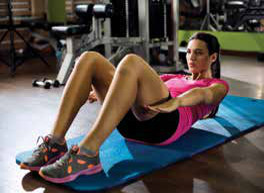
The shoulder is a complicated joint. It moves very freely, unlike a knee or elbow, because it has less bony stability. Instead, the surrounding muscles provide stability. Those muscles must be strong to help prevent injury—but injuries do happen.
One of the most common shoulder injuries is impingement syndrome. The supraspinatus muscle, part of the rotator cuff, runs along the top of the shoulder, with its tendon attaching to the “ball” of the ball-and-socket joint. That tendon runs under the sometimes rough and sharp front edge (acromion) of the shoulder blade. Since there’s not much space, sometimes the tendon becomes painfully pinched, or impinged, especially when performing activities requiring overhead reaches.
If left untreated, impingement syndrome can lead to another common injury: a torn rotator cuff. Not all rotator cuff injuries result from impingement syndrome, since the “cuff” is actually composed of four shoulder area muscles and attendant tendons. A tear can be acute—caused abruptly by a trauma, such as lifting something incorrectly—or chronic, caused by repeated small injuries to one or more muscles and tendons. We can help you recover from impingement syndrome or rotator cuff tears by demonstrating better methods and positions for performing tasks that involve the shoulder area as well as teaching you strengthening exercises for the muscles.
You may wonder why your shoulders hurt when you do core-strengthening exercises. The core is in a different area entirely. It’s composed of a large group of muscles including the transversus abdominis (part of the abdominal wall), multifidus (adjoining the spine), diaphragm (under the lungs) and pelvic floor muscles. But many of the suggested core strengthening exercises, such as bridges, push-ups and quadrupeds, require your shoulders to bear weight.
We can provide an alternate routine to strengthen your core that will put much less stress on your shoulders, as well as show you how to incorporate pillow supports into your core strengthening to further relieve pressure. We’ll literally take the weight off your shoulders.
















